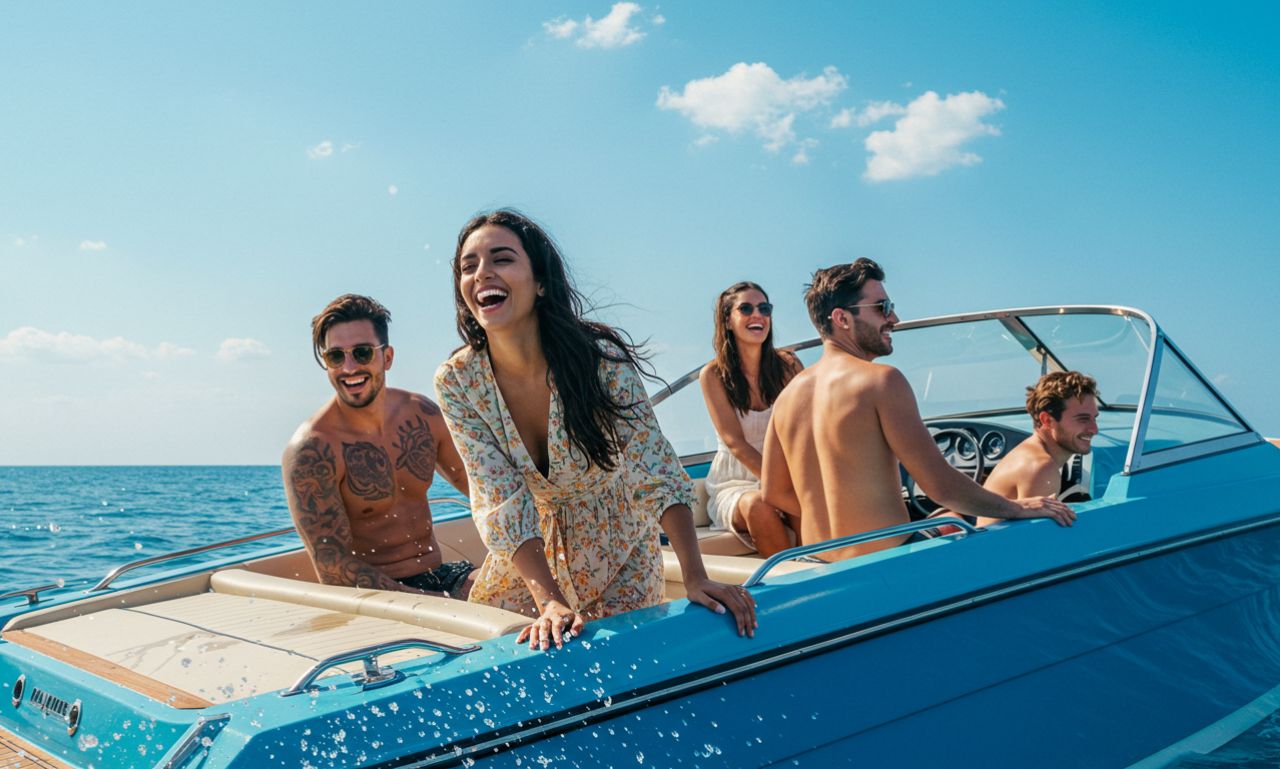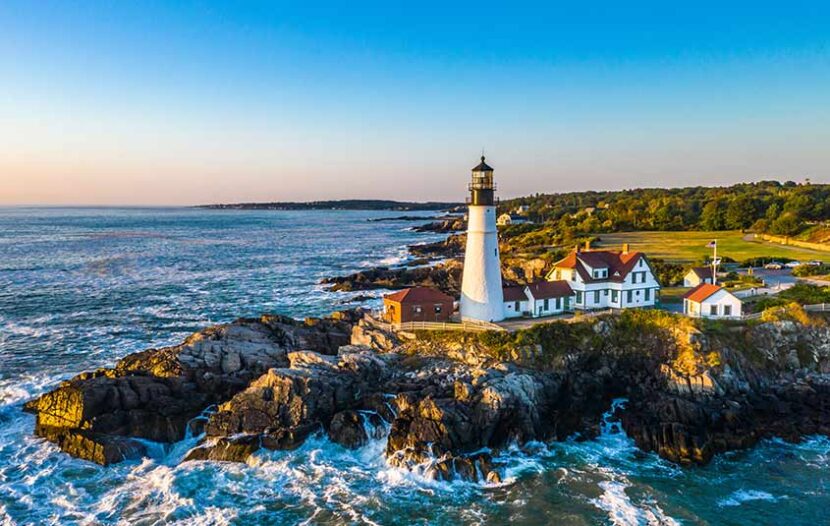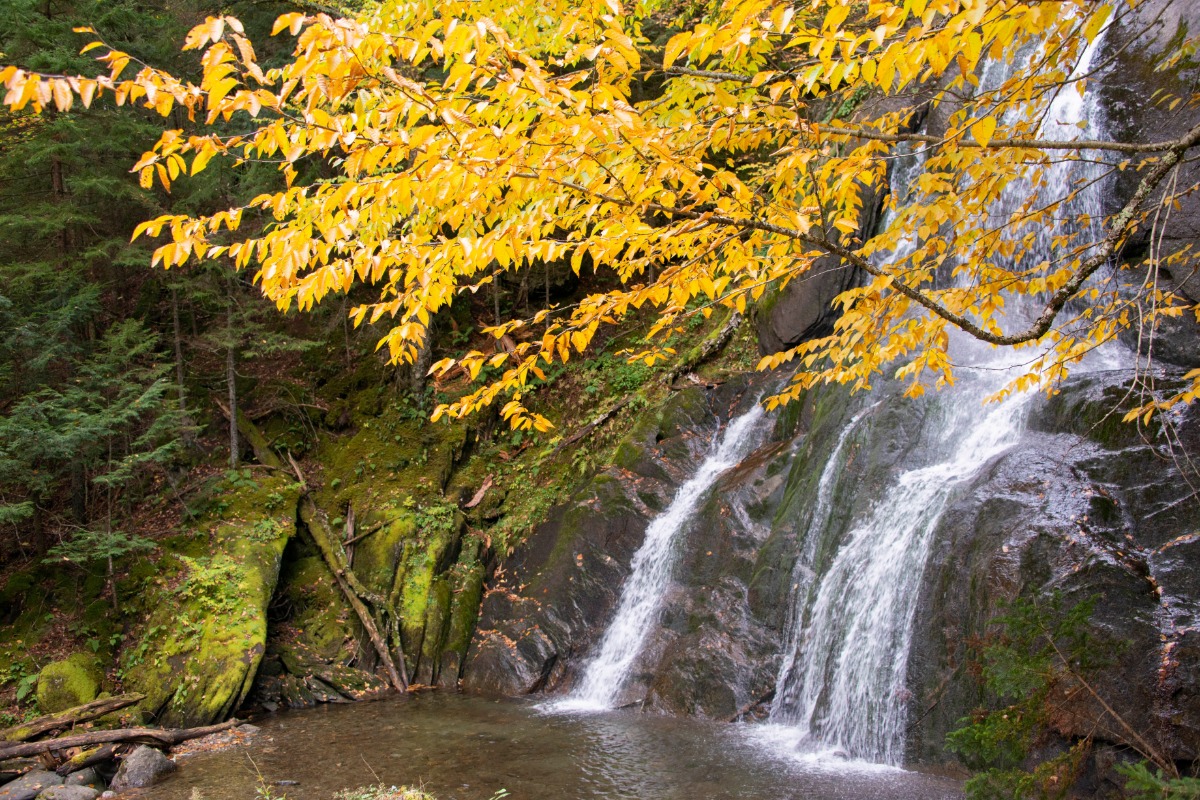Veneajelu: The Ultimate Guide to This Refreshing Boating Experience
Have you ever heard of veneajelu? It might sound unfamiliar, but this simple word from Finland describes one of life’s greatest pleasures: going for a boat ride. More than just a trip across the water, veneajelu is an experience. It’s about feeling the gentle breeze, hearing the waves lap against the hull, and connecting with nature from a unique perspective. It’s a chance to unwind, explore, and create lasting memories with friends and family. This guide will walk you through everything you need to know about embracing the joy of veneajelu, from its cultural roots to how you can enjoy it right here in the United States.
Key Takeaways
- What is Veneajelu?: A Finnish term for “boat ride,” it represents the cultural significance of enjoying time on the water, whether for leisure, exploration, or simply relaxing.
- Not Just for Experts: You don’t need to be a seasoned sailor. Veneajelu can be as simple as a guided tour, a paddleboat on a lake, or a rented motorboat for an afternoon.
- Experience it in the U.S.: From the Great Lakes to the Florida Keys and the Pacific Northwest, America is full of incredible places for a veneajelu adventure.
- Safety is Key: Always prioritize safety by checking weather conditions, wearing life jackets, and understanding the rules of the waterway you’re on.
- Plan Ahead for Success: A little planning regarding your destination, boat type, budget, and supplies ensures a smooth and enjoyable trip.
What Exactly Is Veneajelu?
At its core, veneajelu is the Finnish word for “boat ride.” The term is a combination of two words: vene (meaning “boat”) and ajelu (meaning “a ride” or “a drive”). However, it represents much more than its literal translation. In Finland, a country with over 188,000 lakes and a long, beautiful coastline, boating is deeply woven into the national identity and summer culture. For Finns, veneajelu is not just an activity; it’s a cherished pastime. It symbolizes a break from the everyday hustle, a way to connect with the serene natural landscapes, and a social activity to be shared. It can be a slow, quiet journey through an archipelago, a fun-filled day of water sports, or a practical means of getting to a summer cottage. This concept translates beautifully to anyone, anywhere, who appreciates the simple joy of being out on the water.
The Cultural Roots and Meaning of Veneajelu
The cultural significance of veneajelu in Finland is tied to the country’s geography and history. For centuries, waterways were the main highways for trade, travel, and communication. This practical reliance on boats has evolved into a deep-seated love for recreational boating. When the long, dark winter gives way to the bright, seemingly endless days of summer, Finns flock to the water. A veneajelu is an essential part of the Finnish summer, akin to Americans having a barbecue on the Fourth of July. It’s about embracing the light and warmth while it lasts. This tradition fosters a strong sense of self-reliance and respect for nature. Children learn to handle boats from a young age, and there’s an unspoken understanding of the power and unpredictability of the water. It’s a tradition that brings families and friends together, offering a shared experience away from digital distractions.
How to Pronounce Veneajelu
For native English speakers, the word veneajelu might look a bit intimidating, but its pronunciation is quite straightforward once you break it down. Let’s go through it syllable by syllable:
- Ve-ne: The “ve” sounds like the “ve” in “vest.” The “ne” sounds like the “ne” in “net.” So, the first part is simply veh-neh.
- A-je-lu: The “a” is a short ‘a’ sound, like in “ah.” The “je” is pronounced like the “ye” in “yes.” The “lu” sounds like the “loo” in “loop.” Putting it all together, this part is ah-yeh-loo.
Now, combine the two parts: Veh-neh-ah-yeh-loo. The emphasis is generally placed on the first syllable. Don’t worry about getting it perfect on the first try. The spirit of veneajelu is about enjoyment, not perfect pronunciation. Just saying the word shows an appreciation for the culture behind this wonderful activity.
Types and Variations of a Veneajelu Experience
A veneajelu is not a one-size-fits-all activity. The type of experience you have depends entirely on the boat you choose and your destination. You could opt for a peaceful, human-powered journey by kayaking or canoeing on a calm lake, allowing you to quietly observe wildlife and get some great exercise. For a more social and relaxed outing, a pontoon boat is perfect for a group of friends or family to cruise, swim, and enjoy a picnic on the water. If you crave speed and excitement, a motorboat or speedboat opens up possibilities for waterskiing, tubing, or simply covering more distance to explore different coves and islands. For a touch of romance or nostalgia, a classic sailboat offers a timeless veneajelu, powered by the wind. Even a simple pedal boat on a park pond can be its own form of delightful veneajelu.
|
Type of Veneajelu |
Best For |
Typical Duration |
Average Cost |
|---|---|---|---|
|
Kayaking/Canoeing |
Solo exploration, exercise |
1-4 hours |
$ (Low) |
|
Pontoon Boating |
Groups, families, relaxing |
Half to full day |
$$ (Medium) |
|
Speedboating |
Water sports, thrill-seekers |
2-6 hours |
$$$ (High) |
|
Sailing |
Peaceful journeys, learning a skill |
Half day to multi-day |
$$-$$$ (Varies) |
Where to Experience Veneajelu in the United States
You don’t need to travel to Finland to enjoy a fantastic veneajelu. The United States is blessed with an abundance of incredible waterways perfect for every kind of boater. For lake lovers, the Great Lakes offer an ocean-like experience with charming coastal towns and vast open waters. In the Midwest, Missouri’s Lake of the Ozarks is a massive reservoir with countless coves to explore. Down south, the Florida Keys provide a tropical paradise for boaters, with crystal-clear turquoise waters, vibrant coral reefs for snorkeling, and a laid-back island vibe. In the Pacific Northwest, the San Juan Islands in Washington are a world-renowned destination for sailing and wildlife watching, where you might spot orcas and seals. For a unique experience, consider a houseboat trip on Lake Powell, where you can navigate stunning red rock canyons. Even your local state park’s lake can be the perfect spot for a spontaneous afternoon veneajelu.
Planning Your First Veneajelu Adventure
A successful veneajelu begins with good planning. First, decide what kind of experience you want. Are you looking for a quiet afternoon of fishing, a high-energy day of water sports, or a relaxing cruise with friends? Your goal will determine the type of boat you need and the best location. Next, set a budget. Costs can include a boat rental, fuel, marina fees, and any licenses you might need. Check local regulations, as some states require a boating safety certificate to operate a motorized vessel. Once you have your boat and location sorted, plan your route. Have a general idea of where you want to go, but also be flexible. Finally, pack smart. Essentials include sunscreen, hats, plenty of water, snacks, a first-aid kit, and a fully charged phone in a waterproof case. Preparing properly ensures you can relax and fully enjoy your time on the water.
Understanding the Costs of Veneajelu
The cost of a veneajelu can vary dramatically, from very affordable to quite expensive. The most budget-friendly option is to use a boat you already own or to choose a human-powered vessel like a kayak or canoe, where rental fees are typically low. Renting a small motorboat or a pontoon boat for a half-day can be a mid-range option, often costing a few hundred dollars, plus the price of fuel. For a more luxurious experience, chartering a larger yacht with a captain for a full day will be on the higher end of the spectrum. When renting, be sure to ask what is included in the price. Does it cover fuel, life jackets, and safety equipment? Are there any hidden fees for cleaning or insurance? By doing a little research and comparing prices from different marinas or rental companies, you can find a veneajelu option that fits your budget perfectly.
Essential Veneajelu Safety Tips
Safety should always be the top priority for any veneajelu. Before you even leave the dock, check the weather forecast. Conditions on the water can change rapidly, so it’s crucial to be aware of any approaching storms or high winds. Always tell someone on shore your float plan—where you are going and when you expect to return. Make sure there are enough life jackets for everyone on board and that they fit properly; children, in particular, should wear one at all times. Familiarize yourself with the boat’s safety equipment, including the fire extinguisher, horn or whistle, and first-aid kit. It is also important to understand the “rules of the road” on the water to avoid collisions with other vessels. Finally, never drink alcohol and operate a boat. Designate a sober skipper to ensure everyone gets back to shore safely.
Proper Etiquette on the Water
Following proper etiquette makes the veneajelu experience more enjoyable for everyone. One of the most important rules is to be mindful of your wake. When passing smaller boats, sailboats, or people fishing, slow down to a no-wake speed to avoid swamping them or disturbing their activity. This is also crucial when navigating near shorelines, docks, and marinas to prevent erosion and damage. Respect other boaters’ space; don’t anchor too close to another boat without their permission. When it comes to noise, keep music at a reasonable volume so it doesn’t bother others who are seeking a peaceful day on the water. Always be ready to offer assistance to a fellow boater in distress. Lastly, practice the “leave no trace” principle. Pack out everything you bring in, and never throw trash overboard. Keeping the waterways clean ensures they can be enjoyed for generations to come.
Seasonal Considerations for Your Veneajelu
The best time for a veneajelu largely depends on your location and the type of experience you seek. For most of the United States, summer is the prime boating season, offering warm weather and long, sunny days perfect for swimming and water sports. However, this is also the busiest time, so expect more crowded waterways and higher rental prices. Spring and fall can be fantastic times for a veneajelu. The weather is often pleasant, the scenery is beautiful with spring blooms or autumn colors, and the water is far less crowded. These shoulder seasons are ideal for fishing, sailing, and quiet cruising. Even winter can offer unique boating opportunities in warmer climates like Florida or Arizona. A winter veneajelu can be a peaceful escape, but be sure to dress in layers and closely monitor the colder water temperatures and shorter daylight hours.
Making Veneajelu a Family-Friendly Activity
A veneajelu can be an incredible bonding experience for the whole family, creating memories that will last a lifetime. To make it successful with children, the key is to keep it fun and engaging. Involve them in the planning process by letting them help pick out snacks or choose a fun destination like a beach or a good swimming spot. Pack plenty of toys, games, and activities to keep them entertained during quieter moments of the cruise. Consider bringing along a tube or water skis for some added excitement if your boat is equipped for it. Safety is doubly important with kids on board, so ensure they understand the rules, such as staying seated while the boat is moving and wearing their life jackets. Keep the trip duration reasonable to match their attention spans. A happy and comfortable child makes for a relaxing and enjoyable veneajelu for everyone.
Accessibility in Boating and Veneajelu
Enjoying a veneajelu should be possible for everyone, regardless of physical ability. The boating industry has made significant strides in accessibility in recent years. Many modern marinas now feature accessible docks and ramps that make boarding a vessel easier for individuals with mobility challenges. There are also specialized boat lifts and transfer systems that can safely move a person from a wheelchair to a boat seat. Some boat rental companies and community boating programs offer pontoon boats or other vessels specifically designed with wider doorways, flat decks, and secure spaces for wheelchairs. Organizations dedicated to adaptive sports often host boating events, providing the necessary equipment and support staff. If you or someone in your group has accessibility needs, it’s best to call marinas and rental companies in advance to discuss your requirements and find a solution that ensures a safe and comfortable veneajelu.
Sustainable Veneajelu: Protecting Our Waterways

A crucial part of embracing the spirit of veneajelu is practicing environmental stewardship to protect the beautiful waterways we love. This starts with proper boat maintenance. Regularly check your engine to prevent oil or fuel leaks that can contaminate the water. When refueling, be careful not to spill, and use an absorbent pad to catch any drips. Use biodegradable, non-toxic cleaning products to wash your boat. When out on the water, be mindful of wildlife. Keep a safe distance from animals like seals, dolphins, and nesting birds to avoid stressing them. Stick to marked channels to protect sensitive aquatic vegetation and sea floors. And, of course, never throw any trash overboard. By adopting these sustainable practices, we can ensure that the joy of veneajelu can be experienced for many years to come. As we have noted before on resources like https://versaillesblog.com/, mindful enjoyment of nature is key to its preservation.
Capturing the Moment: Photography Tips for Your Trip
Your veneajelu will be full of picture-perfect moments, and with a few simple tips, you can capture them beautifully. First, protect your gear. Use a waterproof camera or a waterproof case for your smartphone. A floating strap is also a great investment to prevent your device from sinking if you drop it. To get the best shots, pay attention to the light. The “golden hours” shortly after sunrise and before sunset provide a soft, warm light that makes everything look magical. Use a polarizing filter to reduce glare on the water’s surface, which will make the colors of the water pop and allow you to see more clearly beneath the surface. Don’t just take wide shots of the landscape; focus on the details too. Capture the texture of a rope, the spray of a wake, or the happy expressions on your friends’ faces. These detail shots help tell the complete story of your wonderful veneajelu.
Common Mistakes to Avoid on Your Veneajelu
Even seasoned boaters can make mistakes. By being aware of common pitfalls, you can ensure your veneajelu is smooth sailing. One of the biggest errors is failing to check the weather forecast. A beautiful morning can quickly turn into a stormy afternoon, and being caught unprepared on the water is dangerous. Another frequent mistake is running out of fuel. Always start your trip with a full tank and have a clear idea of your boat’s fuel consumption and range. Forgetting to pack essential supplies like water, sunscreen, and a first-aid kit can also turn a fun day into an uncomfortable one. Finally, many new boaters struggle with docking. Don’t be afraid to take it slow and approach the dock against the wind or current for better control. If you’re unsure, practice in an open area first or ask for help. Avoiding these simple mistakes is key to a stress-free veneajelu.
How to Choose the Right Veneajelu Provider
If you’re renting a boat or booking a guided tour for your veneajelu, choosing the right provider is essential for a safe and enjoyable experience. Start by reading online reviews from multiple sources. Look for consistent feedback about the quality of the boats, the professionalism of the staff, and the overall customer experience. When you contact a potential provider, don’t hesitate to ask questions. Inquire about their safety procedures, their insurance coverage, and what’s included in the rental price. A reputable company will be transparent and happy to provide this information. Ask about the age and condition of their fleet. A well-maintained boat is a safer boat. If possible, visit the marina in person to inspect the boats before you book. A trustworthy provider will prioritize your safety and work to ensure your veneajelu adventure is everything you hoped it would be.
Conclusion
Veneajelu is more than just a word; it’s an invitation to experience the unique freedom and tranquility that only a day on the water can provide. Whether you’re gliding through a calm lake in a kayak, laughing with friends on a pontoon boat, or feeling the thrill of a speedboat, you are embracing this cherished Finnish tradition. The beauty of veneajelu is its simplicity and versatility. It can be a grand adventure to a new destination or a simple, quiet escape on your local river. By planning ahead, prioritizing safety, and respecting the environment, you can unlock countless opportunities for exploration and relaxation. So, find your nearest body of water, gather your favorite people, and set out on your very own veneajelu.
Frequently Asked Questions (FAQ)
1. Do I need a boating license for a veneajelu?
It depends on your state and the type of boat. Many states require a boating safety certificate for operating a motorized vessel of a certain horsepower. Always check your local regulations before heading out.
2. What is the most budget-friendly way to enjoy veneajelu?
The most affordable options are typically human-powered boats like kayaks, canoes, or paddleboards, which have low rental costs. Another great option is to join friends who already own a boat and offer to chip in for fuel and snacks.
3. What should I do if the weather suddenly turns bad?
If you see a storm approaching, the safest thing to do is to head back to the dock immediately. Make sure all passengers put on their life jackets and secure any loose items on the boat.
4. Can I fish during my veneajelu?
Absolutely! Fishing is a very popular veneajelu activity. Just make sure you have the appropriate fishing license for the body of water you are on and are familiar with the local fishing regulations.
5. Is veneajelu safe for people who can’t swim?
Yes, as long as proper safety precautions are taken. Anyone who is not a confident swimmer should wear a U.S. Coast Guard-approved life jacket at all times while on the boat or near the water.
6. How many people can I bring on a veneajelu?
Every boat has a maximum capacity plate that states the total number of people and the maximum weight it can safely carry. Never exceed this limit.
7. What’s the difference between veneajelu and just “boating”?
Functionally, they are the same. However, veneajelu carries a cultural connotation of leisure, relaxation, and a connection to nature that is deeply rooted in Finnish summer culture, adding a layer of intentional enjoyment to the act of boating.














Post Comment